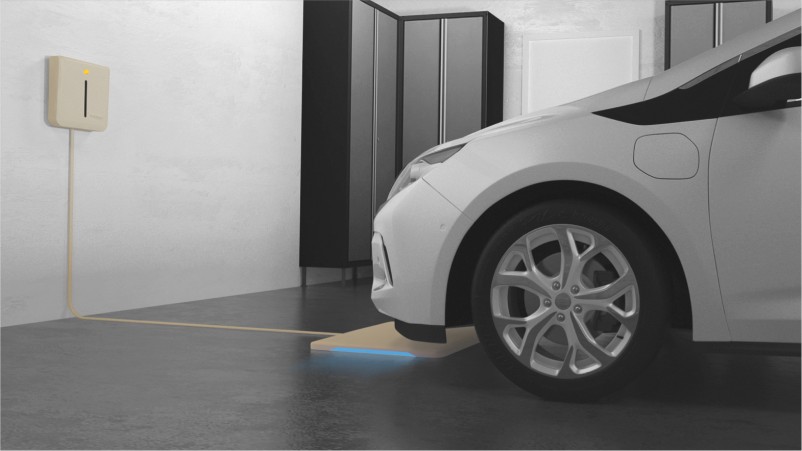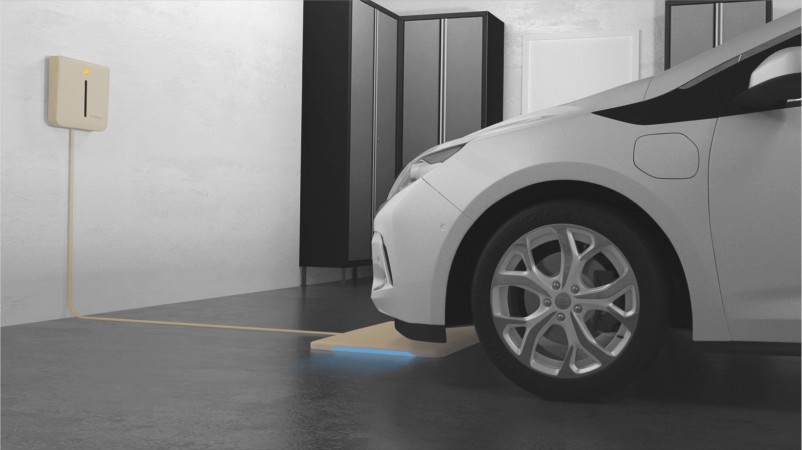Electric robo-taxis are a real possibility. Trends in transportation, energy, and demographics indicate that future vehicles will operate autonomously, run on electricity rather than fossil fuels, and be shared instead of privately owned.
But before everyone can carpool in self-driving electric cars, we need places to charge them. Today, that’s a challenge: there are only about 20,000 charging stations for electric vehicles in the US. (There are more than 125,000 gas stations for conventional cars.) McKinsey predicts that major economies (China, Europe, India, and the US) will need to invest $55 billion in charging infrastructure by 2031 to support the 140 million electric vehicles that will be on the road then.
There’s also the matter of plugging chargers into the cars. Robo-taxis, by definition, won’t have human drivers to manipulate long, thick charging cables.
A startup called WiTricity thinks a form of wireless charging called magnetic resonance is a smarter way to power up. The technology takes energy from the electric grid, via a wire, and feeds it into a copper coil on the ground, creating a magnetic field. When a second copper coil attached to the bottom of the car comes within range of this field, an electric current is generated on the vehicle side, which is used to charge the car’s battery pack. (For more details, see “Wireless Power.”)
To charge, an electric vehicle (EV) simply needs to park over a coil and wait a few hours. WiTricity says this method is as efficient as inserting a charging cable directly into a car.
WiTricity is not the only company working on wireless charging systems based on magnetic resonance. But the company says its technology will work with any make or model of car, includes important safety features (for instance, the charger shuts down automatically if children or animals somehow squeeze between the coils), and can transmit energy through asphalt or pavement. What’s more, WiTricity says its chargers could be built into parking lots, garages, and streets without needing frequent maintenance, sparking safety concerns, or becoming a target for copper thieves. The company hopes all this will give local governments, real estate brokers, and property managers new incentives to fund charging stations. “If we want the tremendous investment in EV infrastructure that is needed over the next 10 years to happen, we have to figure out who’s going to pay for that and why,” says Alex Gruzen, WiTricity’s CEO.
Price is a key question for WiTricity. Its systems currently cost $1,000 to $1,500 each, while a typical plug-in charger costs less than $1,000. But the company hopes to target parking lots and garages attached to apartment buildings, not just home garages and driveways. Gruzen says he is already talking to landlords who are willing to foot the bill to appeal to tenants who own electric vehicles.
Ultimately, WiTricity wants to move beyond refueling parked cars. One idea is to integrate the technology under a stretch of road, which would enable cars to charge while moving. Gruzen hopes airports and train stations will want that system for their taxi lanes. “Cities and states probably aren’t going to rip up miles and miles of highway for this,” he says. “Where it does make sense is taxi queues, where you’d only have to electrify 100 meters instead of 100 kilometers, and cars could charge the entire time they’re in line.”
Then there’s WiTricity’s most ambitious goal: cars as mobile power banks. The company envisions electric cars as, essentially, rolling batteries storing electricity until periods of peak need, then transmitting some of it back to the grid in exchange for payment or free power the next time they need to top up. Though cars could do this type of energy transfer via conventional plug-in chargers, a wireless exchange would—in theory—be faster and simpler, especially once vehicles operate autonomously.
Some of these ideas are more feasible than others. WiTricity has partnerships with more than a dozen automakers, including nine of the world’s 10 largest. Most of those deals have only yielded R&D experiments, such as the wireless charging system that Hyundai demonstrated in March 2018 on its Kona electric car. But BMW is now selling a hybrid electric vehicle that customers in certain regions can buy with WiTricity’s technology built in. Gruzen says other automakers will follow suit, especially once companies agree on a global standard for wireless EV charging.
Sign up for Clocking In
A look into how technology is shaping the workplace of the future
By signing up you agree to receive email newsletters and
notifications from MIT Technology Review. You can change your preferences at any time. View our
Privacy Policy for more detail.
Gruzen expects WiTricity-enabled parking lots and garages to be built in the next two years. The first ones, he says, will probably be in big Chinese cities, where a large percentage of the population lives in apartment buildings.
Electrified city streets and wireless vehicle-to-grid energy exchanges are probably several years away, but WiTricity has a prototype system that it developed with Honda. Gruzen says Japanese utilities have expressed interest, in part because the country deregulated its energy market and companies want to offer unique services to stand out from the competition.
John Gartner, who analyzes the transportation industry for the market research firm Navigant, thinks ride-hailing and car-sharing services are the best fit for WiTricity’s technology. “In the near term, these companies would see a benefit from not having to train drivers who are unfamiliar with EVs how to plug them in or having to verify that they did plug them in,” says Gartner. “And once we have autonomous cars, requiring a human to come and plug them in for charging is an added expense that these companies would also like to avoid.”


